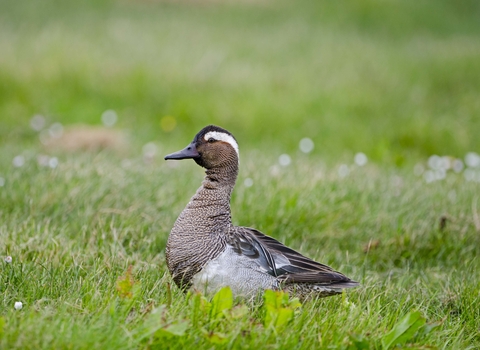
Drake garganey ©David Tipling/2020VISION
Garganey
This scarce breeding duck is a summer visitor, spending the winter in Africa. Although large flocks can be found in their wintering grounds, they are usually only seen in pairs or small groups in the UK.
